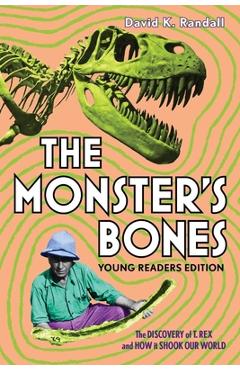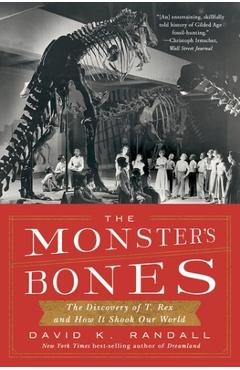T. rex and the Crater of Doom - Walter Alvarez

Detalii T. rex and the Crater
libris.ro
117.85 Lei
130.94 Lei
Science
Walter Alvarez
T. rex and the Crater - Disponibil la libris.ro
Pe YEO găsești T. rex and the Crater de la Walter Alvarez, în categoria Science.
Indiferent de nevoile tale, T. rex and the Crater of Doom - Walter Alvarez din categoria Science îți poate aduce un echilibru perfect între calitate și preț, cu avantaje practice și moderne.
Preț: 117.85 Lei
Caracteristicile produsului T. rex and the Crater
Comandă T. rex and the Crater Online, Simplu și Rapid
Prin intermediul platformei YEO, poți comanda T. rex and the Crater de la libris.ro rapid și în siguranță. Bucură-te de o experiență de cumpărături online optimizată și descoperă cele mai bune oferte actualizate constant.
Descriere magazin:
Sixty-five million years ago, a comet or asteroid larger than Mount Everest slammed into the Earth, inducing an explosion equivalent to the detonation of a hundred million hydrogen bombs. Vaporized detritus blasted through the atmosphere upon impact, falling back to Earth around the globe. Disastrous environmental consequences ensued: a giant tsunami, continent-scale wildfires, darkness, and cold, followed by sweltering greenhouse heat. When conditions returned to normal, half the plant and animal genera on Earth had perished. This horrific chain of events is now widely accepted as the solution to a great scientific mystery: what caused the extinction of the dinosaurs? Walter Alvarez, one of the Berkeley scientists who discovered evidence of the impact, tells the story behind the development of the initially controversial theory. It is a saga of high adventure in remote locations, of arduous data collection and intellectual struggle, of long periods of frustration ended by sudden breakthroughs, of friendships made and lost, and of the exhilaration of discovery that forever altered our understanding of Earth\'s geological history.

Produse asemănătoare

Kit de constructie, Clementoni, Science and Play, Robotul Dino T-Rex
![]() noriel.ro
noriel.ro
Actualizat in 31/10/2025
69.99 Lei

The Monster\'s Bones (Young Readers Edition): The Discovery of T. Rex and How It Shook Our World - David K. Randall
![]() libris.ro
libris.ro
Actualizat in 28/10/2025
111.32 Lei

What If You Had T. Rex Teeth?: And Other Dinosaur Parts (Scholastic Reader, Level 2) - Sandra Markle
![]() libris.ro
libris.ro
Actualizat in 28/10/2025
27.85 Lei

The Monster\'s Bones: The Discovery of T. Rex and How It Shook Our World - David K. Randall
![]() libris.ro
libris.ro
Actualizat in 28/10/2025
100.16 Lei

First Sticker Book T. Rex. and lots of other enormous dinosaurs, Paperback/Alice Beecham
![]() elefant.ro
elefant.ro
Actualizat in 28/10/2025
43.99 Lei
